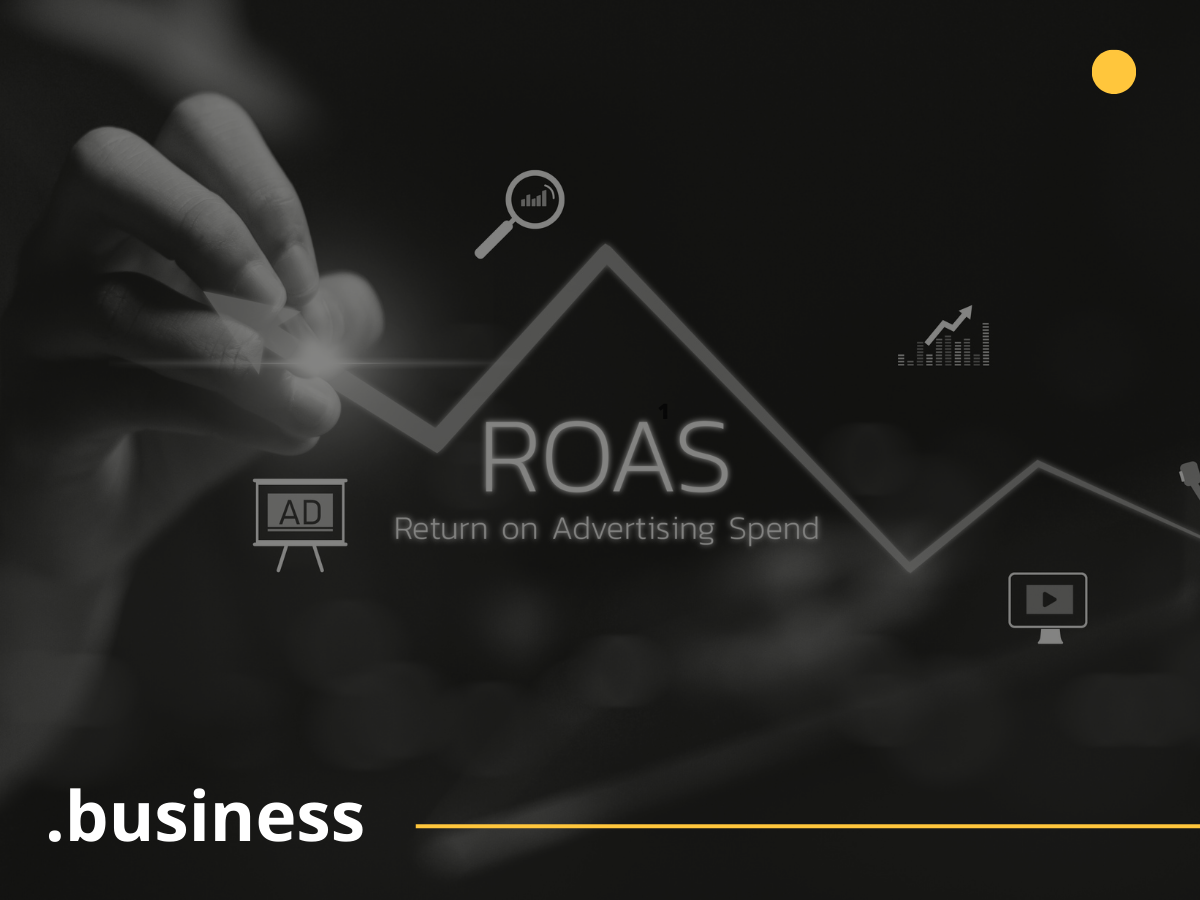For example, if an online store spent R$2,000 on ads and generated R$8,000 in sales, the ROAS would be 4. That means for every real spent, the company earned four. But keep in mind: revenue is not profit, okay? ROAS does not take into account other costs such as shipping, operations, taxes, or production. It only looks at the direct relationship between mediaWhen it comes to investing in digital advertising, one question always comes up: will this investment deliver returns? After all, no one wants to waste time and money on ads that only generate pretty, but empty dashboard numbers. That’s exactly why ROAS was developed.
It shows how much a company earns for every dollar spent on media. If the ROAS is high, the ad is likely on the right track. If it’s low, it’s time to revisit strategies, adjust targeting, or even rethink the creative. Monitoring ROAS helps identify opportunities, optimize strategies, and avoid losses.
More than just understanding the definition, it’s important to know how to apply it in practice, how it differs from similar metrics, and most importantly how to optimize it to improve campaign performance.
Want to dive deeper into this topic? Just keep reading!
What Is ROAS and Why Is It Important in Digital Marketing?
ROAS stands for Return on Advertising Spend. The idea behind it is to show how much your company earned for every dollar invested in paid media. The formula is straightforward: it’s based on the revenue generated by the campaign divided by the cost of the campaign.
spend and revenue.
That’s why ROAS has become so relevant in digital marketing, there’s a constant need to justify investments. On platforms like Google Ads, Facebook Ads, or TikTok Ads, spending is ongoing and results can change quickly. This metric helps make more informed decisions: when to scale, when to cut, and when to try a new approach.
Additionally, ROAS helps assess performance by channel, creative, and even audience. That means you can reallocate budget more efficiently, avoiding poorly optimized campaigns from draining your resources.
What Are the Differences Between ROAS and ROI, and When Should You Use Each Metric?
Although both refer to return on investment, ROAS and ROI are not the same thing. ROI, or Return on Investment, is broader. It considers all costs involved in the operation — not just media spend, but also expenses related to staff, tools, inventory, and more.
While ROAS focuses on advertising performance, ROI provides a more complete financial view. You could have a high ROAS but a low ROI if your other business costs are too high. That’s why the two indicators complement each other but serve different purposes.
So, use ROAS when you want to evaluate the direct performance of paid campaigns. Use ROI when you want to analyze the overall business performance, considering margins and profitability. In digital strategies, it’s ideal to monitor both, but ROAS is usually the first indicator used for quick media planning adjustments.
What Factors Influence ROAS?
One of the biggest mistakes when evaluating ROAS is treating it as an isolated metric. It’s actually the result of a series of decisions from keyword selection to the design of the “Buy” button on your website. All of this influences the outcome.
Audience targeting, for instance, is one of the first variables. Campaigns that reach people truly interested in the product tend to convert better, which boosts ROAS. That’s why understanding audience behavior, building realistic personas, and testing different audiences is an ongoing effort.
Another key factor is the creative, the ad itself. Copy, images, calls to action, and format directly impact click-through rates. A creative that communicates clearly, grabs attention without exaggeration, and guides users to take action can multiply results.
User experience also plays a huge role. If the ad is great but the site takes too long to load or the purchase process is frustrating, conversions drop and when conversions drop, so does ROAS. That’s why investing in a streamlined checkout, responsive pages, and intuitive navigation helps more than you might think.
Finally, don’t forget that competition and cost per click on ad platforms also matter. In highly competitive niches, the cost per sale is higher. In such cases, consider alternatives like SEO, email marketing, and organic content to balance acquisition costs.
How to Optimize ROAS Using Data and A/B Testing
Improving ROAS doesn’t require magic formulas, it takes analytical discipline. The first step is having access to reliable, up-to-date data, which includes properly setting up conversion tags on platforms, integrating tools like Google Analytics, and ensuring that every touchpoint is being tracked.
Once you have the data, the testing begins and A/B tests are one of the most effective ways to understand what works best. You can compare two different ads, two audience segments, two formats, or even two checkout flows. The key is to change only one variable at a time, so you can truly identify what made the difference.
Once patterns emerge, you can apply the learnings to other campaigns and refine your strategy. Small tweaks, like changing the ad’s CTA or adjusting the delivery time can significantly improve performance.
And don’t forget: the frequency of testing is just as important. Consumer behavior changes, platforms evolve, and market conditions shift. Optimizing ROAS is a continuous process that requires weekly or even daily monitoring of campaigns.
What Tools and KPIs Should You Track to Measure Campaign Performance?
To make decisions based on ROAS, you need reliable tools. Most major ad platforms already provide robust dashboards with metrics like cost per click, conversion rate, cost per acquisition, and, of course, ROAS.
In Google Ads, for example, you can view ROAS by campaign, ad group, and keyword. On Facebook Ads, the metric appears as Return on Ad Spend, making it easy to track. Alongside those, tools like RD Station, HubSpot, Google Analytics 4, and Hotjar help you cross-analyze data and understand post-click behavior.
Beyond ROAS itself, it’s worth tracking other supporting KPIs like conversion rate, CPA (cost per acquisition), AOV (average order value), time on page, and more. These indicators help create a full picture and reveal areas for improvement that ROAS alone doesn’t show.
Automating reports, setting alerts, and establishing clear goals by channel make media management much simpler, more organized, and stress-free. When everything is well connected, decisions become faster and performance more predictable, right?
It’s clear that digital advertising requires more than just creativity and budget. It demands control, analysis, and constant adjustments. That’s why ROAS, when monitored attentively, becomes a reliable compass for guiding decisions.
By regularly tracking this metric, you can better understand what’s working, where your budget delivers more, and what needs to be improved. It won’t solve everything by itself, but when integrated into a solid data-driven strategy, ROAS has the power to transform campaign results.
If you want to see your campaigns in a new light and make more confident decisions, start tracking ROAS more frequently. And if you want more practical content on digital performance, marketing, and conversion strategies, follow us on Instagram and LinkedIn to stay updated.



